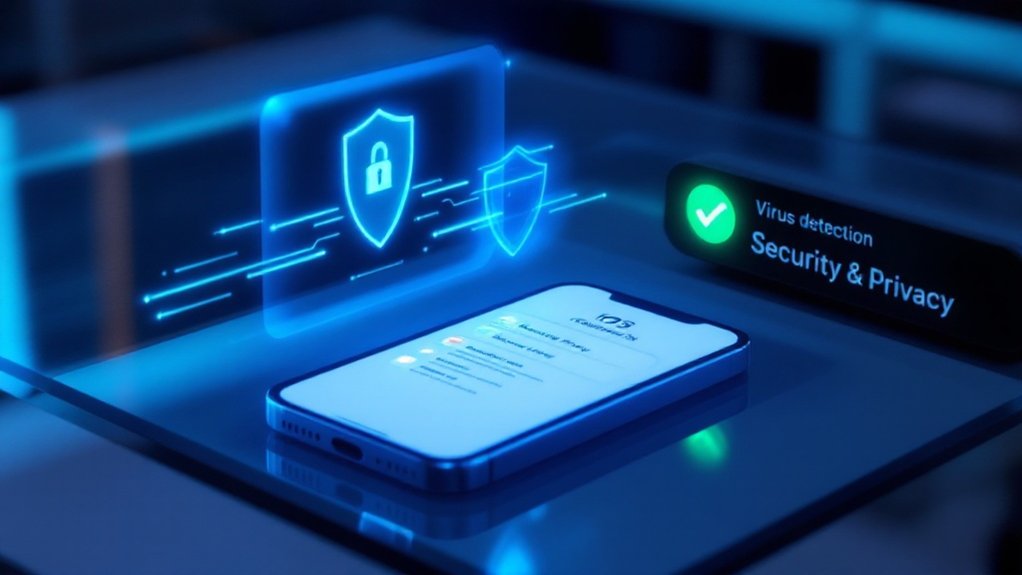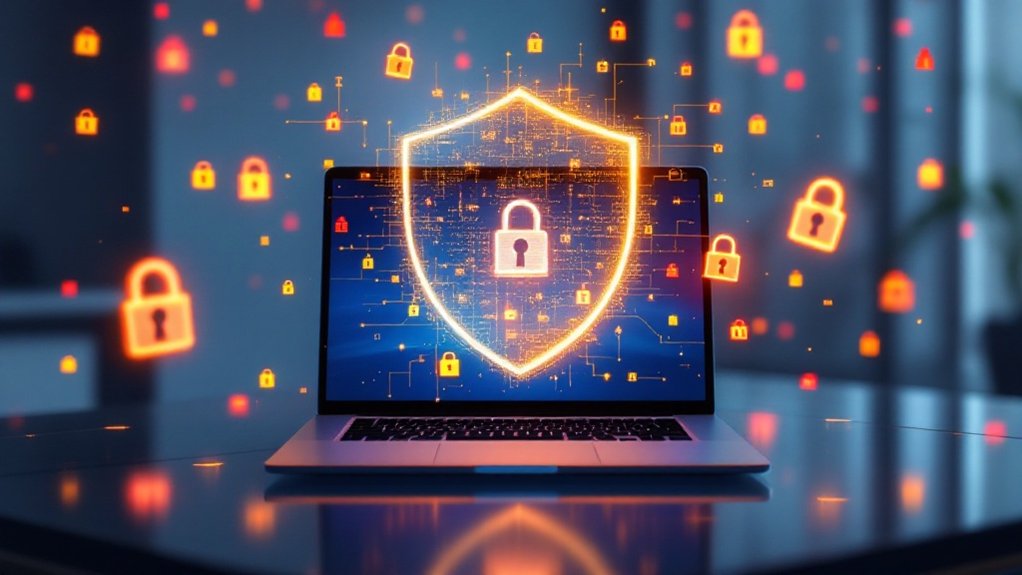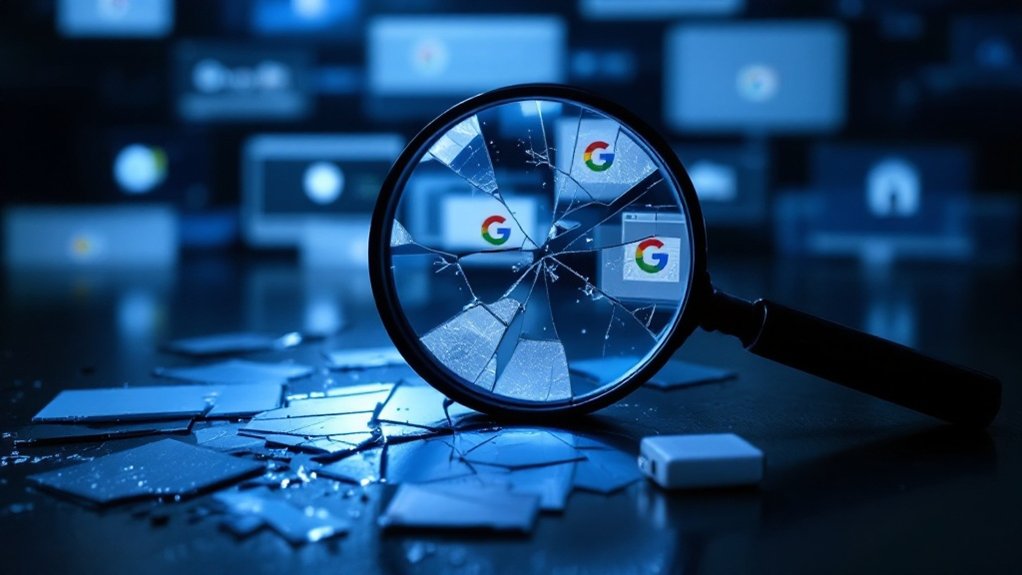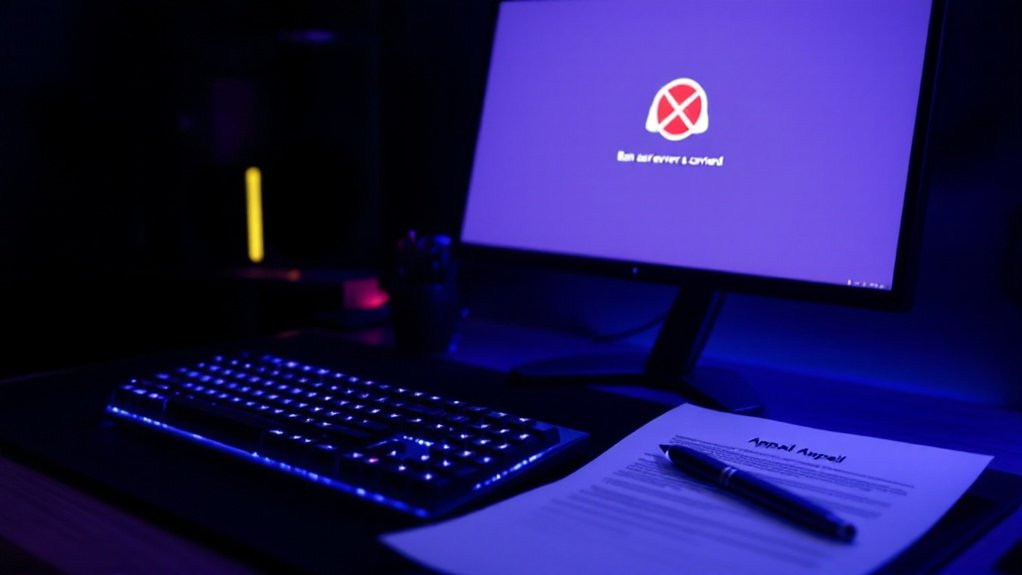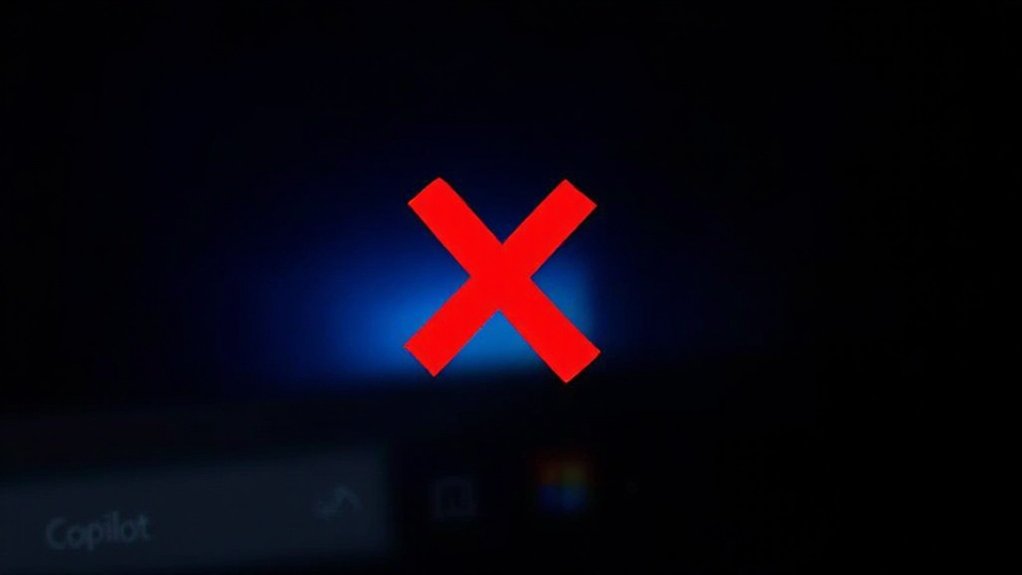Effective iPhone virus scanning requires multiple security measures, including regular iOS software updates, installation of reputable antivirus applications, and systematic device monitoring. Users should access Settings > General > Software Update to maintain current security patches, alongside utilizing trusted antivirus apps from the App Store for improved protection. Regular audits of installed applications, data usage patterns, and battery performance help identify potential security threats. These fundamental steps establish a strong foundation for thorough iPhone security protection, with additional advanced measures available for maximum device safety.
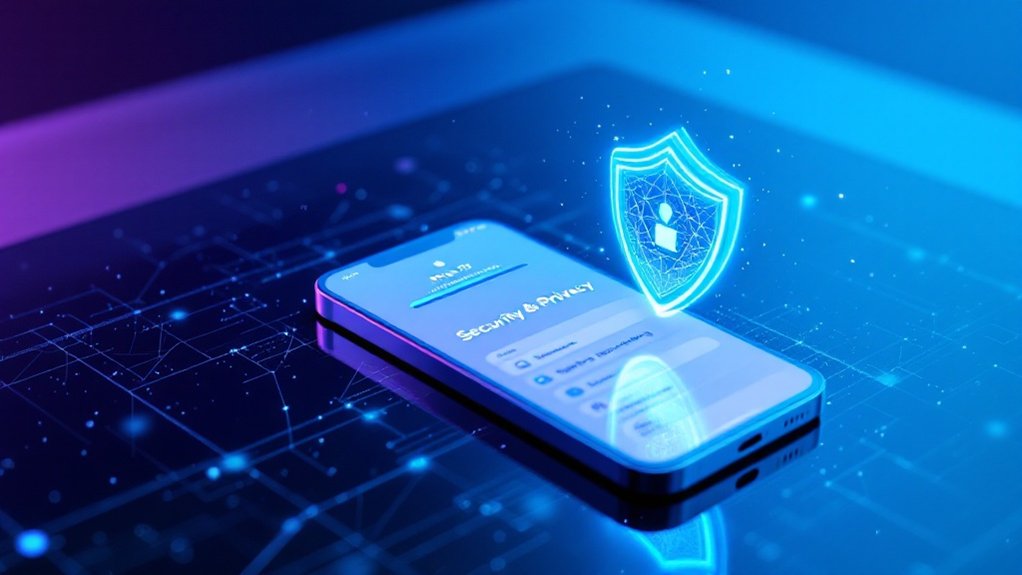
Even though iPhones are typically regarded as secure against viruses, users should still implement regular security checks to protect their devices from emerging threats and malicious software.
The first line of defense involves maintaining current iOS software through regular system updates, which can be accessed through Settings > General > Software Update. These updates contain critical security patches that protect against newly identified vulnerabilities. A simple restart of your iPhone can help disable any system modifications being used by viruses. The built-in iOS sandboxing feature helps prevent viruses from spreading between apps.
Keeping iOS software updated through system settings serves as your iPhone’s primary shield against evolving security threats and vulnerabilities.
Installing reputable antivirus applications from the App Store provides an additional layer of protection through regular scanning capabilities and real-time threat detection. Users should select antivirus apps with high ratings, substantial download numbers, and extensive security features, all the while avoiding unverified or poorly rated security applications that could potentially compromise device integrity. Enabling Find My iPhone functionality adds an extra layer of security for tracking and protecting your device remotely.
Device owners must regularly audit their installed applications, removing any suspicious or unfamiliar programs that may have been inadvertently downloaded. Monitoring data usage patterns through Settings > Cellular helps identify potential security breaches, as malware often generates unusual spikes in data consumption that deviate from normal usage patterns.
Battery performance and device behavior serve as key indicators of potential security issues. Users should monitor battery health through Settings > Battery, investigating any applications that consume disproportionate amounts of power or exhibit unusual behavior.
Sudden performance degradation, unexpected pop-ups, or random system reboots may signal the presence of malicious software.
Implementation of strong security practices markedly improves iPhone protection. This includes utilizing strong, unique passwords for all accounts, enabling two-factor authentication for Apple ID, and avoiding connections to unsecured public Wi-Fi networks.
The use of a Virtual Private Network (VPN) provides encrypted internet connectivity, protecting sensitive data from potential interception.
Regular security maintenance should include reviewing app permissions, ensuring applications only access necessary device features, and monitoring analytics data through Settings > Privacy > Analytics & Improvements.
These proactive measures, combined with vigilant observation of device behavior and prompt attention to security alerts, create a thorough defense strategy against potential security threats on iOS devices.
Frequently Asked Questions
Can Iphones Get Infected With Viruses Through Public Wi-Fi Networks?
Although iPhones can potentially be compromised through public Wi-Fi networks, iOS’s strong security architecture greatly limits traditional virus infections.
The primary risks involve hackers intercepting data or creating malicious hotspots to capture sensitive information.
Security experts note that even though direct virus transmission is rare, users should remain vigilant by employing VPNs, avoiding sensitive transactions, and maintaining updated iOS versions when connecting to public networks.
How Often Should I Perform a Virus Scan on My Iphone?
Although Apple doesn’t specify a mandatory virus scan frequency, security experts recommend weekly checks for ideal iPhone protection.
Users should conduct immediate scans when encountering suspicious activity, such as unexplained battery drain or system slowdowns.
Regular monitoring through iOS security features typically suffices, though more frequent scans may be warranted after downloading new apps or connecting to unfamiliar networks.
Daily scans are usually unnecessary because of iOS’s strong built-in safeguards.
Do Apple’s Built-In Security Features Eliminate the Need for Antivirus Apps?
Although Apple’s built-in security features provide strong protection through sandboxing, the Secure Enclave chip, and App Store vetting, they do not completely eliminate the need for antivirus apps.
iPhones remain vulnerable to sophisticated phishing attacks, social engineering, and zero-day exploits.
Third-party security applications can offer supplementary protection through additional features like VPN encryption, real-time malware scanning, and identity theft monitoring, particularly when users frequently connect to public networks.
Can Jailbreaking My Iphone Make It More Vulnerable to Viruses?
Jailbreaking greatly increases an iPhone’s vulnerability to malware and viruses by dismantling Apple’s built-in security architecture.
This modification removes essential safeguards, including iOS sandboxing protection and automated security updates, as well as enabling the installation of unverified third-party applications.
Security researchers report that jailbroken devices face up to five times higher risk of malware infection compared to stock iOS devices, primarily because of compromised system integrity and exposure to unauthorized software sources.
What Are the Warning Signs That My Iphone Might Have Malware?
Common malware warning signs on iPhones include unexpected performance issues, such as sudden slowdowns, frequent app crashes, and abnormal battery drain.
Users should monitor for suspicious apps appearing without installation, random pop-up advertisements, and unusual browser redirects.
Further red flags encompass unexplained outgoing messages, strange account activity, and unauthorized changes to system settings.
Device overheating and irregular data usage spikes likewise warrant immediate investigation.
